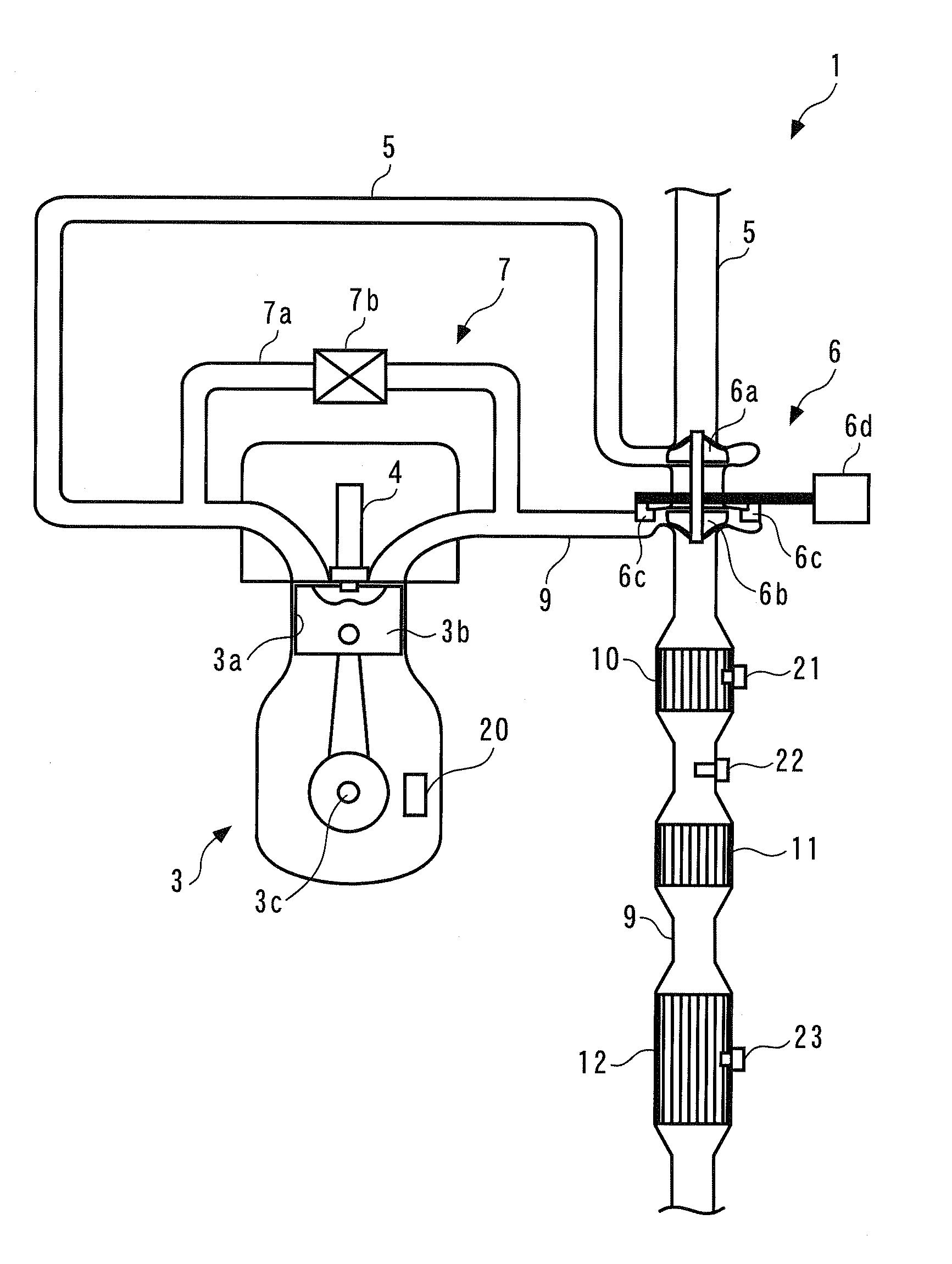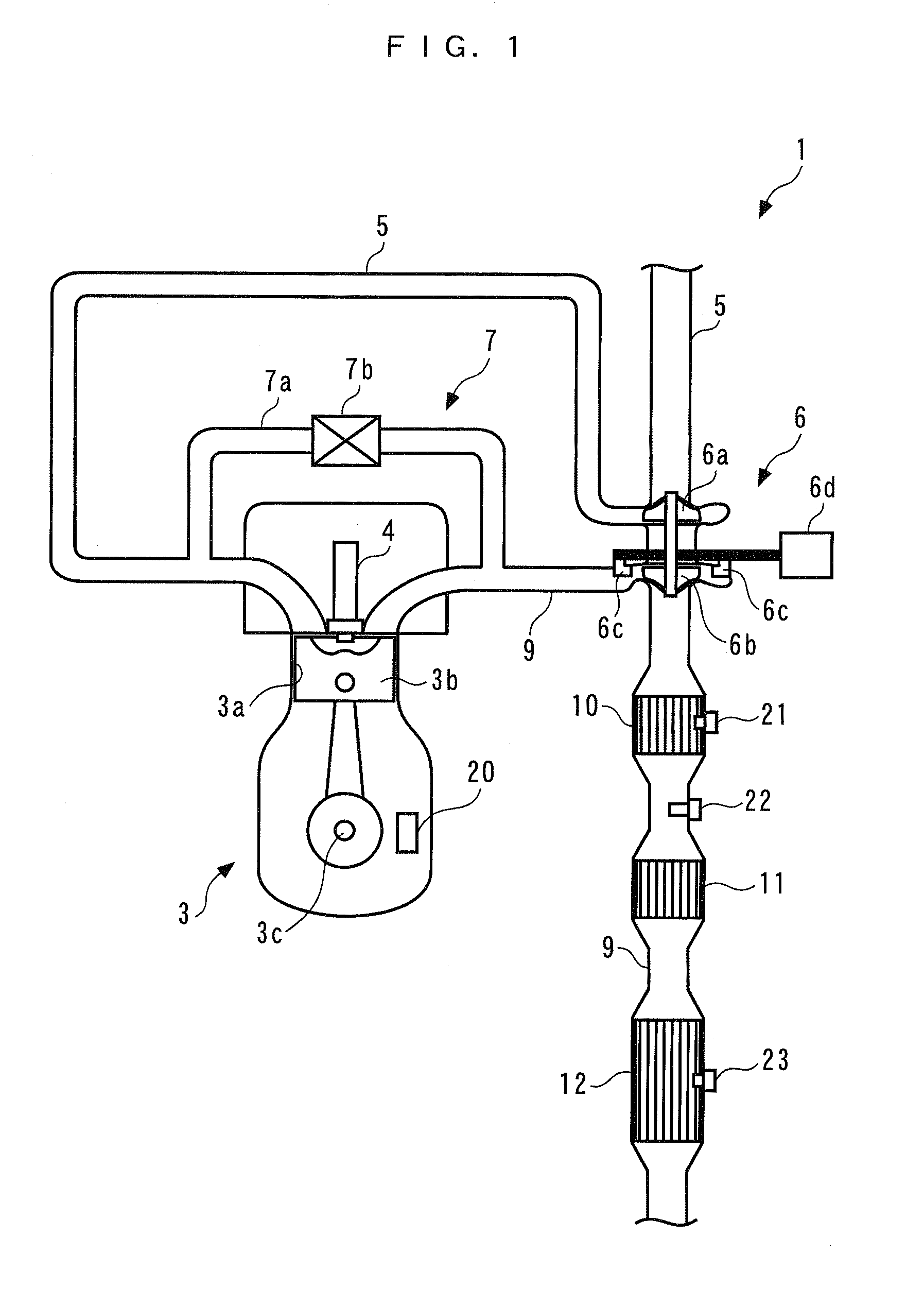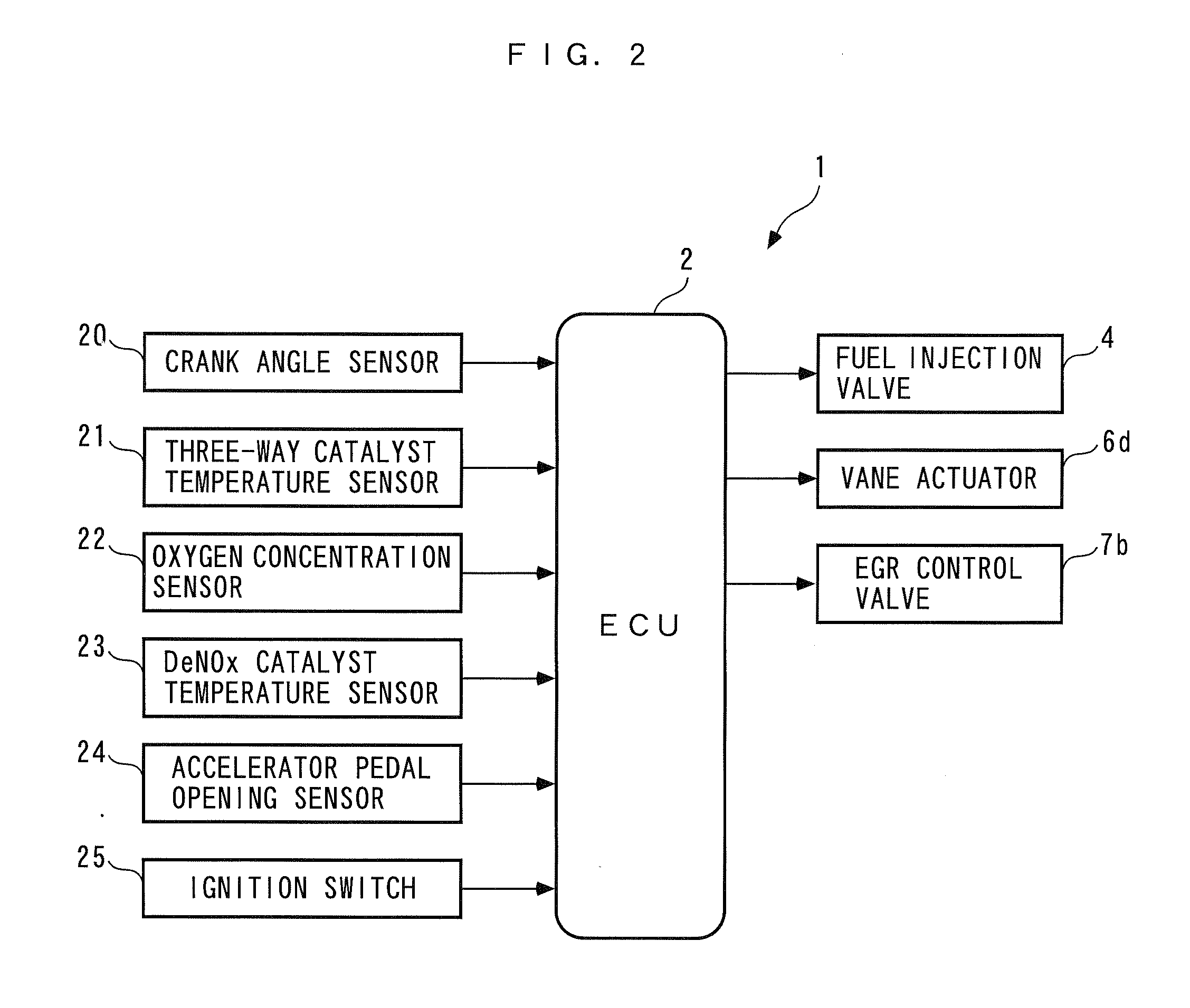Control system and method for internal combustion engine and engine control unit
a control system and internal combustion engine technology, applied in the direction of electrical control, process and machine control, instruments, etc., can solve the problems of increasing exhaust emissions, affecting the control system, and not being able to configure the above-described control system from the above technical, so as to improve the controllability of the air-fuel ratio, avoid interaction, and high responsiveness
- Summary
- Abstract
- Description
- Claims
- Application Information
AI Technical Summary
Benefits of technology
Problems solved by technology
Method used
Image
Examples
Embodiment Construction
[0097]Hereafter, a control system for an internal combustion engine, according to an embodiment of the present invention will be described with reference to the drawings. FIG. 1 shows the control system 1 according to the present embodiment, and the internal combustion engine (hereinafter referred to as “the engine”) 3 to which is applied the control system. Referring to FIG. 2, the control system 1 includes an ECU 2. As described hereinafter, the ECU 2 carries out various control processes, such as an air-fuel ratio control process, depending on operating conditions of the engine 3.
[0098]The engine 3 is an in-line four-cylinder diesel engine installed on a vehicle, not shown, and includes four pairs of cylinders 3a and pistons 3b (only one pair of which is shown), a crankshaft 3c, and so forth. The engine 3 is provided with a crank angle sensor 20.
[0099]The crank angle sensor 20 is comprised of a magnet rotor and an MRE (magnetic resistance element) pickup, and delivers a CRK signa...
PUM
 Login to View More
Login to View More Abstract
Description
Claims
Application Information
 Login to View More
Login to View More - R&D
- Intellectual Property
- Life Sciences
- Materials
- Tech Scout
- Unparalleled Data Quality
- Higher Quality Content
- 60% Fewer Hallucinations
Browse by: Latest US Patents, China's latest patents, Technical Efficacy Thesaurus, Application Domain, Technology Topic, Popular Technical Reports.
© 2025 PatSnap. All rights reserved.Legal|Privacy policy|Modern Slavery Act Transparency Statement|Sitemap|About US| Contact US: help@patsnap.com



